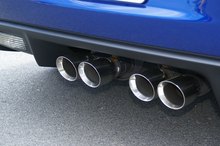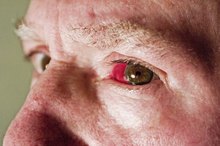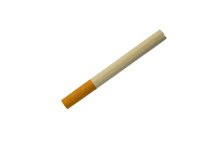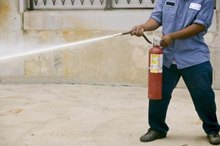The Effects of Inhaling Smoke From a Bonfire
**Bonfires may seem harmless and controlled, but the smoke emanating from them is extremely dangerous.
If you are experiencing serious medical symptoms, seek emergency treatment immediately.
** Regardless of the source, smoke can contain a variety of chemicals and compounds that are life-threatening in high enough doses. Before starting a bonfire or any kind of controlled fire, it is important to know the possible complications that can arise from inhaling smoke and its by-products.
Ingredients
Bonfires can contain any number of combustible materials. To better understand the dangers, it is important to know what is being inhaled. The smoke is composed of three things: simple asphyxiants, chemical asphyxiants and irritant compounds. Simple asphyxiants burn away oxygen, which leaves toxic carbon dioxide behind.
Chemical asphyxiants are substances that interfere with the body's ability to carry and distribute oxygen, which include carbon monoxide, hydrogen cyanide and hydrogen sulfide.
Irritant compounds include things like ammonia and sulfur dioxide. These cause damage to mucous membranes. As a result, airways can swell and collapse, making breathing very difficult.
- Bonfires can contain any number of combustible materials.
- Chemical asphyxiants are substances that interfere with the body's ability to carry and distribute oxygen, which include carbon monoxide, hydrogen cyanide and hydrogen sulfide.
Symptoms
The Effects of Inhaling Raid Ant & Roach Spray
Learn More
Inhaling smoke from any source can result in shortness of breath. Respiratory damage makes it difficult for cells to carry oxygen, and the person must breathe more to compensate. The victim's breathing may also become hoarse. This occurs when fluids collect in the lungs and block the upper airways. If an individual is downwind from a bonfire, the smoke can also cause red, irritated eyes. This can lead to burnt corneas.
Soot from the smoke can also build up in the throat and nose, causing blockage. Carbon monoxide is a deadly gas emitted by fires. What makes this substance particularly dangerous is that it is invisible and odorless, unlike smoke.
A person may not feel the effects of smoke inhalation and still suffer from carbon monoxide poisoning 12. Warning signs include headache, nausea and vomiting.
- Inhaling smoke from any source can result in shortness of breath.
- If an individual is downwind from a bonfire, the smoke can also cause red, irritated eyes.
When To Seek Help
If a person seems to be fine after inhaling smoke, keeping an eye on him at home can be enough.
However, it is critical to get medical attention if there are outward symptoms like hoarse voice, difficulty breathing, coughing spells or confusion. Some effects may seem minor, but the victim can worsen very quickly. Additionally, do not transport the person in a private vehicle. Ambulances contain life-saving equipment that may be needed.
- If a person seems to be fine after inhaling smoke, keeping an eye on him at home can be enough.
First Aid and Treatment
Harmful Effects of Xylene
Learn More
The most important thing is to remove the person from the source of the smoke into fresh air. If the victim is unconscious, call 9-1-1 and begin performing CPR until help arrives. Medical treatment will vary depending on the nature of the damage. Antibiotics might be used to treat or prevent infection. Doctors could administer antidotes to counter any toxic effects.
Medications will be given to treat pain, swelling and fever if necessary. Steroids are used to reopen the airways. Oxygen will be administered in some cases.
- The most important thing is to remove the person from the source of the smoke into fresh air.
- Medications will be given to treat pain, swelling and fever if necessary.
Related Articles
References
- Emedicine Health: Smoke Inhalation
- Drugs: Smoke Inhalation
- American Cancer Society. Health Risks of Secondhand Smoke. Updated November 13, 2015.
- Government of Canada. Canadian Centre for Occupational Health and Safety. Environmental Tobacco Smoke (ETS): General Information and Health Effects Updated March 1, 2011.
- National Institutes of Health. National Center for Biotechnology Information. How Tobacco Smoke Causes Disease: The Biology and Behavioral Basis for Smoking-Attributable Disease: A Report of the Surgeon General.
Writer Bio
Alex Saez is a writer who draws much of his information from his professional and academic experience. Saez holds a Bachelor of Arts in English literature from Queen's University and an advanced diploma in business administration, with a focus on human resources, from St. Lawrence College in Kingston, Ontario.









